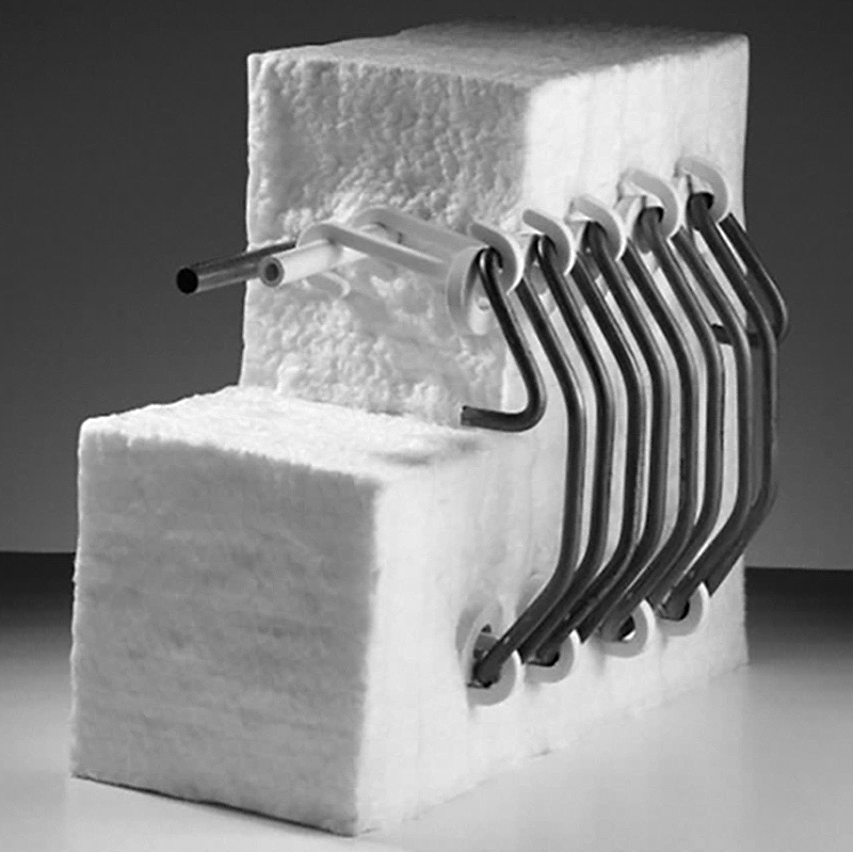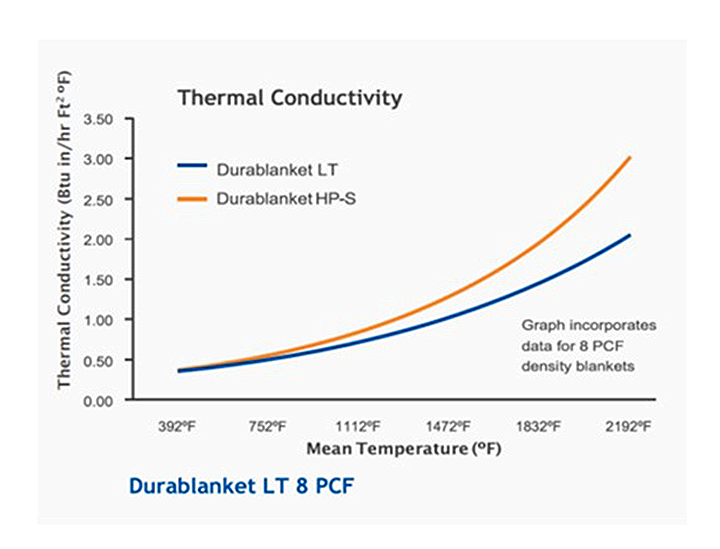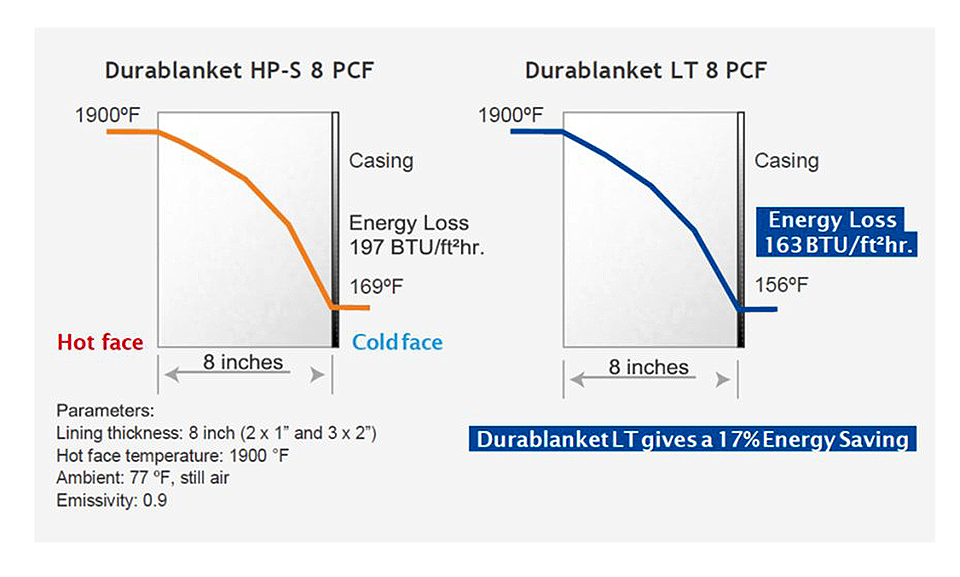
Whether it is the government, management, or simply general public pressure, it seems like everyone in our industry is being asked to reduce their carbon footprint. Ceramic fiber insulation can play a big part in your plan to reduce your carbon footprint. No matter where you stand on the issue of “Going Green,” it is a reality that we are going to have to live with in the future. This then begs the question: How the heck do we reduce our carbon footprint?
In the refractory and high-temperature insulation world, I like to break this down into three areas:
Big picture capital investments: For the sake of this article, we will focus on switching to electric heating.
Improved material performance: New developments in the ceramic fiber industry allow for the ability to better insulate furnace linings.
Routine maintenance items: Plants can save money and reduce gas usage by keeping an eye on a few key parts of their furnace.
Capital Investments
Electrically heated furnaces seem to be growing in popularity, as they present an easy way to point to not directly using fossil fuels. While that may be considered “kicking the can down the road” since the electricity to heat them has to come from somewhere, it is still a viable piece in the green movement. In the heat-treating industry, electrically heated furnaces are playing an ever-increasing role. One of the options for electrically heating a furnace is the “rod over bent” or ELE system. In Figure 1, you’ll see that the electric elements are hung on the ceramic fiber modules using ceramic tubes and S hooks. This design minimizes any additional support you may need on the shell. Additionally, since this element system uses ceramic fiber modules, it maximizes thermal efficiency and can even be used with new-age higher insulating fibers that will be discussed later. ELE systems also allow for differing zone temperatures through element layout. Finally, electrically heated furnaces typically require less permitting.

Improved Furnace Linings
Back in the early 2000s, when the price of natural gas was above 10 MMBtu, there was a large push to look at various ways to make furnaces more efficient. The fracking revolution quickly reduced the price of natural gas in the U.S., and subsequently decreased the urgency to make furnaces more gas efficient. With the new advent of reducing one’s carbon footprint, that push has returned.
One of the easiest ways to achieve this is by making the furnace linings more thermally efficient. Forging furnaces typically have a ceramic fiber lining on the roof and upper walls. While ceramic fiber is a great insulator in its most basic form, a new product developed by Unifrax now allows for traditional ceramic fiber linings to be up to 20 percent more thermally efficient. This is achieved by manufacturing it in a proprietary process that creates a fiber blanket with less shot. Figure 2 shows the difference between a standard fiber blanket and the new LT blanket.


While these fancy numbers are nice, the real question is, what does this mean to me from an energy savings standpoint? At 1,900°F, an 8# density lining will yield a cold face temperature of 169°F using traditional ceramic fiber blanket. With the new LT blanket in
the same conditions, the lining causes a cold face temperature of 156°F. (See Figure 3.) This translates to a reduction in the loss of BTU/Ft2HR of 34. This reduction can vary based on temperature, lining thickness and density, but with these conditions you get a 17 percent energy savings. Outside of reducing the carbon footprint, this will save money on the gas bill and increase the life of the furnace lining.
Routine Maintenance Items
While going green can sound great, we all know the realities of budget constraints. This can be especially burdensome on old furnaces that have been around for ages. Thankfully, there are some simple steps and best practices that furnace operators can implement to run their furnace more efficiently. The area that typically loses the most heat on a furnace is around the door. The mechanical abuse, along with the constant thermal shock of opening and closing, lead to increased degradation of the insulation lining.
Following are a few quick tips for better efficiency:
Furnace door design: Design your furnace doors with a module perimeter that can be easily removed and replaced. This prevents the additional cost of relining the whole furnace due to wear and tear on the sealing surface.
Fill in hot spots immediately: The longer a hot spot lingers, the bigger the problem will become and BTU loss will increase exponentially.
Test out fiber lintels and jambs: While they are not the ideal solution for every type of forge furnace, a well-designed fiber lintel and jamb can help with increasing thermal efficiency and reducing the wear and tear of thermal shock.
Another key spot that can often lead to increased heat loss is the burner area. There are plenty of old furnaces with old burner systems out there. When burner blocks begin to show signs of wear, they are also likely becoming less efficient. This would typically be due to leaks in any of the cracks and any reduction in the block thickness, leading to a reduction in insulating value. Just as important as the burner block itself is ensuring that there is a proper seal between the block and furnace lining. High temperature mat (low density stuffing material) or a pumpable fibrous material are two typical solutions for the issue.
The biggest challenge I hear with going green is the fear of increased cost or loss of operational efficiency. These are valid concerns, as it doesn’t do a company any good to go green and then have to close its doors in two years. Reducing one’s carbon footprint should be seen as a long-term goal, with benchmarks along the way. Proper communication to the entire team, along with tangible numbers and benefits, go a long way to ensuring employees buy into the program. After all, sometimes simply complaining about “The Feds” is a great way to get everyone on board with the plan.

























